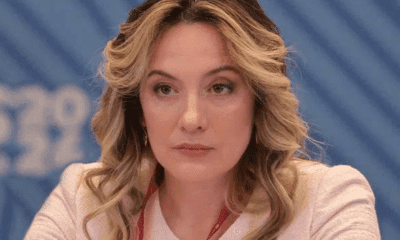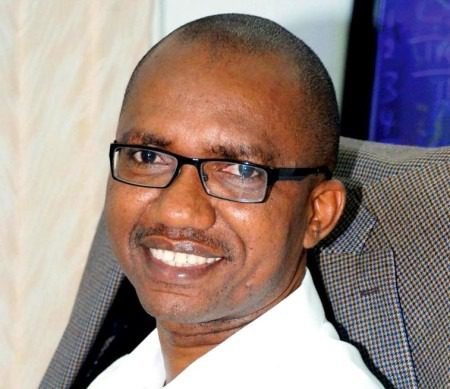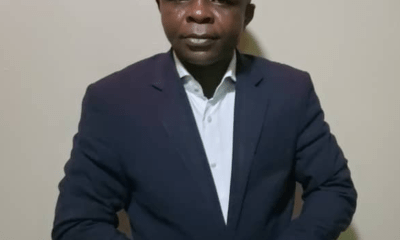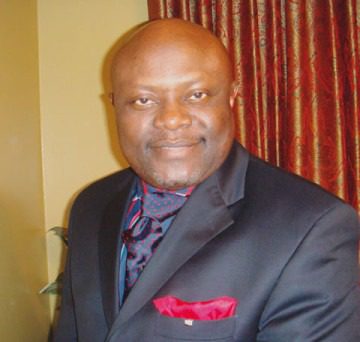Economic Issues
Matters Arising from the Federal Cash Transfer Scheme -By Eze Onyekpere


The Cash Transfer Scheme (CTS or Scheme) of the federal government has attracted wide attention in recent weeks, especially in its link to the recovered Abacha loot of $322.5 million. Issues have been raised about its legality and constitutionalism, the fairness of the distribution in terms of geographic spread and the methodology for the identification of actual poor Nigerians, who are supposed to benefit from the Scheme and the transparency and accountability of the Scheme to the highest office in the land, being that of the Citizen of the Federal Republic of Nigeria. This discourse intends to analyse the issues and, much more, examine the economic underlining of the Scheme. National and international standards will be used in the analysis.
Some clarifications are necessary from the outset. The first is that monies so far disbursed for the Scheme have come from appropriation and no part of the Abacha loot has been used. The second is that the federal government borrowed the sum of $500 million from the World Bank for the Scheme but disbursements from the World Bank loan have not started or, at best, are about to start. The third is that the Abacha loot in the sum of $322.5 million will now be added to the $500 million World Bank loan to make it $822.5 million available for the Scheme. At the current exchange rate of N365 to $1 USD, this amounts to N300.212 billion. This is therefore a huge amount of money and its use and disbursement should attract the interest of all discerning Nigerians.
The first issue that comes to the fore is that no one is very sure of the exact funds from which Abacha looted this money. But considering that he was a maximum dictator who acted on behalf of the federation, this money coming from Abacha loot may properly belong to the Federation Account (established under S.162 of the Constitution of the Federal Republic of Nigeria, 1999), which should be shared by the three tiers of government. Sharing this money to states is not an option here in view of the profligate nature of state governors, some of whom stole and mismanaged bailout funds given to them to clear backlogs of salaries. In line with Principle 5 of the Global Forum on Assets Recovery (GFAR): “Where possible, and without prejudice to identified victims, stolen assets recovered from corrupt officials should benefit the people of the nations harmed by the underlying corrupt conduct”. Thus, returning the recovered loot to be re-looted will go against Nigeria’s national and international obligations.
Again, if the Abacha loot is federal government money, is there legislative authority vide appropriation for the money to be used for the CTS? S.80 of the Constitution is clear that expenditures without appropriation are grave constitutional crimes. There is nothing in the Appropriation Acts of 2016, 2017 and 2018 showing that the money from Abacha or any other recovered loot has been dedicated to the CTS. Rather, there is a vague provision in the revenue profiles of these Acts referring to recovered loot as part of the funding sources of the general budget, without tying it down to any specifics. Thus, there is need for the expenditure to pass through appropriation to legalise the process. Thus, the recovered loot could have legally been spent on any other expenditure head.
The second issue is whether it makes sense to dedicate this huge sum of money for cash transfers to the poor. The objective of cash transfers is mainly poverty reduction and to help beneficiaries improve their standard of living and possibly gain or create gainful employment. But there are deeper questions of what led the poor to poverty in the first place. Again, what are the binding constraints that restrain the poor from exiting poverty? Would a cash transfer scheme be good enough to build their capacities for knowledge and sustainable income after the end of the scheme? If we isolate the binding constraints, can we invest in measures that will remove them for targeted sections of the population, being the poorest of the poor? Would the CTS remove constraints around education, health, access to services, etc.? Can we channel the Abacha loot to the CTS and re-negotiate the use of the World Bank’s $500 million? There are so many questions demanding answers. The CTS will be for a while, may be three years and thereafter, what happens? Where are the beneficiaries of previous similar programmes? Have they fallen back into poverty? An empirical approach needs to be used in the determination of the use of the recovered funds.
There have been suggestions that the Abacha loot be used for a legacy project, which everyone can see and identify with so that Nigerians will have no need to read literature before appreciating the impact of the returned loot. The last issue on the nature of the use of the loot has been taken care of by the agreement Nigeria signed with the Swiss government, being the returning authorities who insisted on the monitoring role of the World Bank and Nigeria agreed to use the returned loot for the CTS, which had already attracted World Bank funding. In future recovery negotiations, information should be made available to the public on time, so that various options on the use of the funds and mechanisms to ensure accountability will be arrived at through broad consensus.
The federal government of Nigeria should give consideration to GFAR Principle 6 which, inter alia, calls for encouraging actions which fulfill United Nations Convention against Corruption (UNCAC) principles of combating corruption. Using a small part of the proceeds of the recovered loot to strengthen anti-corruption agencies may also facilitate efforts to stop looting, rather than the poverty of remedial justice inherent in pursuing looted funds, which takes years to succeed. Abacha died in 1998 (20 years ago and the funds were not looted in the year of his death) and today being 2018, we are still discussing the return and use of the funds looted. Agencies such as the office of the auditor-general, which has a institutionalised, systematic and empirical approach to fighting corrupt need all the support they can get to make the struggle against corruption more biting.
The next issue is that of transparency and accountability. As stated in GFAR principle No.4: “Transferring and receiving countries will guarantee transparency and accountability in the return and disposition of recovered assets. Information on the transfer and administration of returned assets should be made public and be available to the people in both the transferring and receiving country”. It is imperative that information about the use, criteria, methodologies of disbursement, etc. of recovered looted funds be available in the public domain. The National Social Investment Office, being the office implementing the CTS should have an interactive website and portal where information will be made available to citizens, including the specific names, addresses and telephone numbers of recipients, so the citizens can independently verify these payments. The qualification criteria and methodologies used in identifying beneficiaries should also be available in the web portal. The experience of the mismanagement of a similar CTS, under the fuel subsidy removal programme, which later manifested as SURE-P Fraud provides the background for the demand for increased transparency.
Transparency provides the feedback for informed debate on corruption, recovery and disposal of asset and associated policies. Indeed, it is a prerequisite for public debate, which can lead to better recovery programmes and more efficient use of recovered resources. For example, if information on the recovery process and resources is not available, it is difficult to discuss it and it may lead to the re-looting of the loot. It facilitates the identification of questionable transactions, thus facilitating the adoption of best practices in the recovery and disposal process.
There are issues of equity and appropriate spread inherent in the current disbursements and threshold criteria/qualification. Available information indicates a scenario where the geo-political zones benefitted in this order: North West had 112,744; North East 44,405; North Central 88,008; South West 39,134; South South 10,429 while the South East got 3,253 beneficiaries. The National Social Investment Office (NSIO) had explained that while some states started early in collaboration with the office, others were lethargic in collaboration and initially ignored the CTS; so this affected the number of citizens in states that benefitted. This meant that states that have not gone through or fully gone through the initial process would not have their indigenes as beneficiaries. It was also explained that some states had started processing CTS with the assistance of the World Bank before the current intervention and therefore were ahead of others in getting beneficiaries on board. Most important, the office states that the payments are not done on the basis of federal character; it is about the individuals and families meeting the threshold criteria. There is however a legitimate expectation that by the end of July all the 36 states should be on board.
In the context of equity and spread, it may be imperative to allocate not less than 70 per cent of the funds to states on the basis of equality, while the remaining 30 per cent will be disbursed according to the actual numbers of the poor and vulnerable. The suggestion does not mean that states will manage the money but each state gets an equal number of beneficiaries or it is pro-rated according to population. It will be absurd to suggest that there is a state in Nigeria without a good number of very poor persons, considering that Nigeria is now rated the country with the highest number of poor people in the whole world. The criteria for the selection of beneficiaries should be robust enough to accommodate the different contexts and manifestations of poverty across the geopolitical zones of Nigeria.
Finally, the National Social Investment Office has started collaboration with civil society in accordance with GFAR’s Principle 10. However, this collaboration needs to be deepened, strengthened and expanded. Regular interactions and briefings will build confidence, increase goodwill in the citizenry and ultimately lead to the success of the programme.
Eze Onyekpere is the lead director at Centre for Social Justice.



















